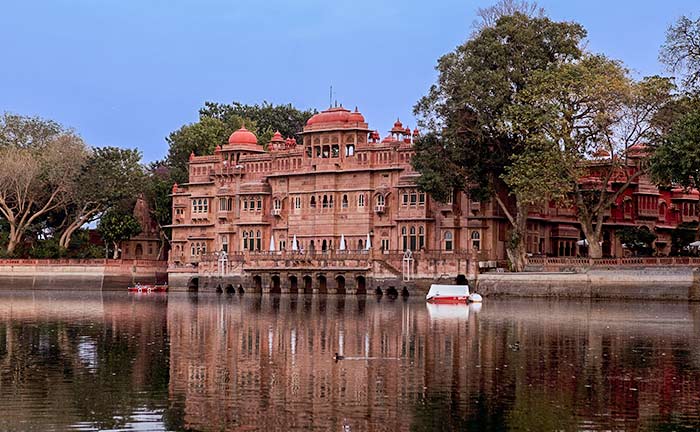Best Places to Visit in Bikaner, Rajasthan
Bikaner, located in the heart of Rajasthan’s Thar Desert, is a vibrant city known for its rich history, stunning architecture, and vibrant culture. Founded in 1488 by Rao Bika, a Rathore prince, Bikaner is a lesser-known gem compared to Jaipur or Udaipur but offers equally captivating experiences. From opulent palaces to mysterious temples and bustling markets, Bikaner promises a unique and unforgettable journey. Here are some of the best places to visit in Bikaner.
1. Junagarh Fort
One of the most iconic landmarks in Bikaner, Junagarh Fort stands as a symbol of Rajputana grandeur. Built in the late 16th century by Raja Rai Singh, the fort is notable for its impressive architecture that blends Mughal, Gujarati, and Rajput styles. Unlike most forts in Rajasthan, Junagarh was never conquered, adding to its allure. Inside, you’ll find intricately decorated palaces such as Anup Mahal, Phool Mahal, and Chandra Mahal, adorned with gold leaf work, mirror work, and elaborate carvings.
2. Karni Mata Temple (Rat Temple)
Located about 30 km from Bikaner in the town of Deshnok, the Karni Mata Temple is one of the most unusual religious sites in India. It is famously home to over 25,000 rats, considered sacred and believed to be the reincarnated souls of Karni Mata’s devotees. Visitors from across the world come to witness these “kabbas” (rats) running freely around the temple. Seeing a white rat is considered especially auspicious. While it may not be for the faint-hearted, the temple offers a fascinating glimpse into local beliefs and traditions.
3. Lalgarh Palace
Built by Maharaja Ganga Singh in the early 20th century, Lalgarh Palace is a beautiful blend of Indo-Saracenic, Mughal, and European architectural styles. Constructed entirely of red sandstone, the palace houses the Lallgarh Palace Hotel and a museum that showcases royal memorabilia, weapons, and artifacts. The lush gardens, latticework balconies, and regal corridors make it a photographer’s paradise and a must-visit for architecture lovers.
4. National Research Centre on Camel
Bikaner is often called the “Camel Country of India,” and the National Research Centre on Camel celebrates this association. Located about 8 km from the city, this one-of-a-kind institute is dedicated to research on camels. Visitors can learn about different camel breeds, their roles in Rajasthani life, and enjoy camel rides and camel milk ice cream. It’s a unique and educational stop, especially for families.
5. Rampuria Havelis
Often referred to as the “pride of Bikaner,” the Rampuria Havelis are a group of stunning mansions built by wealthy merchants during the 15th century. These havelis are an excellent example of Rajputana architecture with detailed jharokhas (balconies), latticework windows, and ornate facades made of red sandstone. Walking through the narrow lanes of Bikaner’s old town and admiring these grand structures is like stepping back in time.
6. Gajner Palace and Lake
Located about 20 km from Bikaner, Gajner Palace is a former hunting lodge turned heritage hotel. Set on the banks of Gajner Lake, the palace is surrounded by a wildlife sanctuary, making it a tranquil retreat away from the city bustle. Visitors can enjoy boating on the lake, spot migratory birds and desert wildlife, or simply relax in the serene natural surroundings.
7. Bhandasar Jain Temple
An architectural gem, the Bhandasar Jain Temple is dedicated to the 5th Tirthankara, Sumatinath. Constructed using a mix of red sandstone and white marble, the temple is famous for its stunning mirror work, frescoes, and gold leaf paintings. According to legend, it was built using ghee instead of water in the mortar. Regardless of the myth, the temple’s interior artistry is breathtaking and offers spiritual calm.
8. Bikaner Camel Festival
If you’re visiting in January, don’t miss the Bikaner Camel Festival, a two-day celebration dedicated to the “Ship of the Desert.” The festival features camel parades, races, beauty contests, and folk performances, offering a colorful slice of Rajasthani culture.
